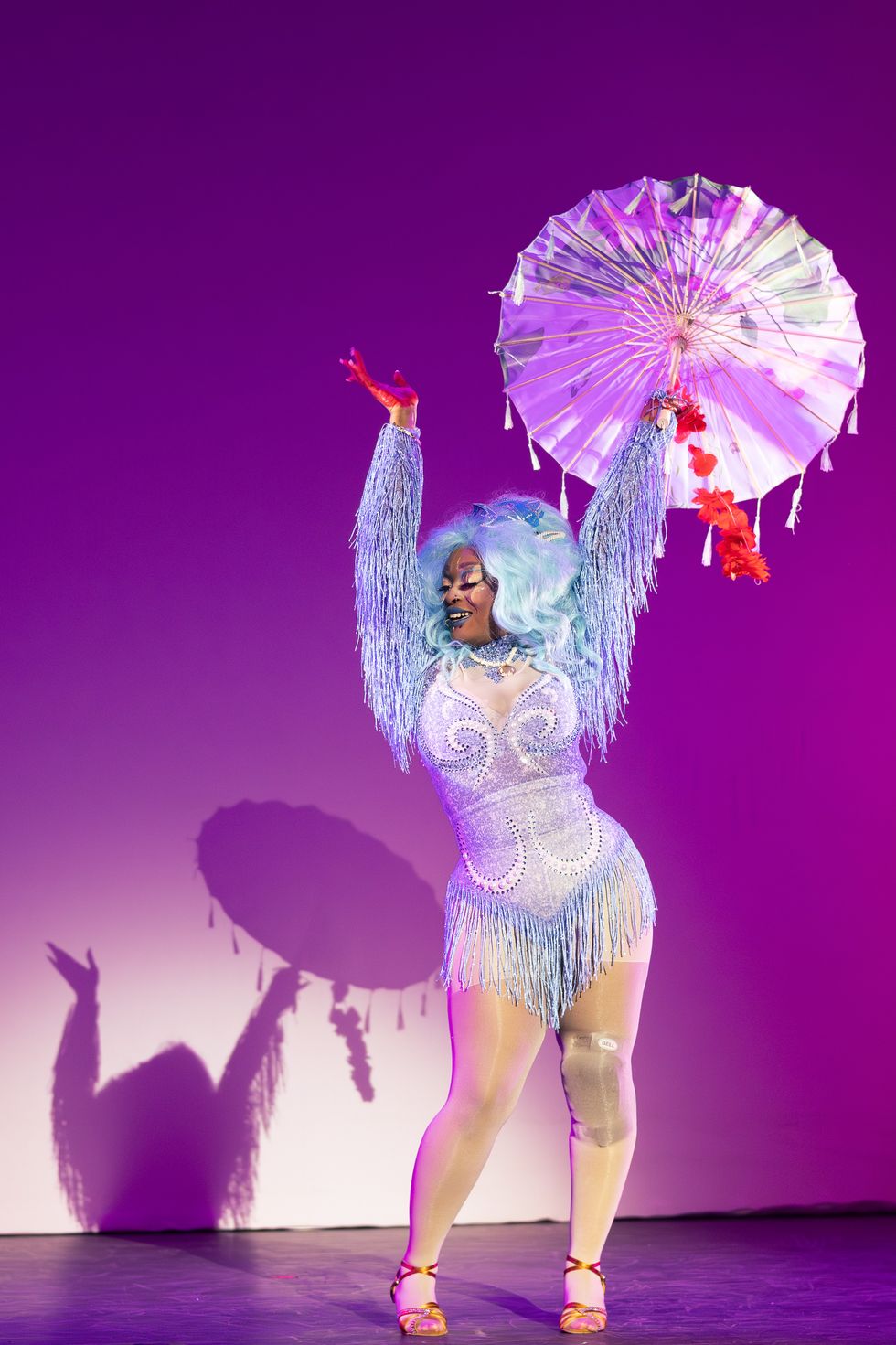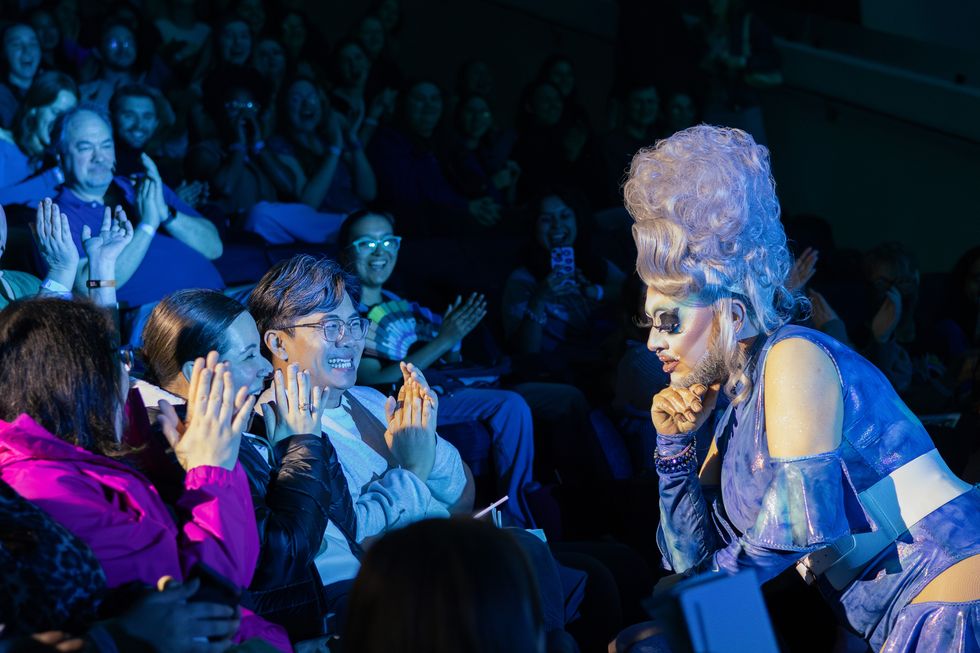Sam Gordon, the internet’s most famous female football player, still remembers the reactions at her first practice. The Utah eighth grader tried out for the boys tackle league in Salt Lake City when she was nine years old.
“I was first in every single speed and agility drill. The coaches would look at their timer and they’d be like, ‘Oh Sam, you need to run this again. I think we clicked it wrong,’” Gordon, now 13, recounts over the phone. “There were, you know, a couple boys who would start chanting, ‘Beat the girl. Beat the girl.’ Sometimes a parent would come onto the field after I tackled him, or they got trucked, and they’d grab their kid by the face mask and be like, ‘Don’t get beat by a girl!’”
A few weeks later, on the first snap of her first scrimmage, Gordon, starting at quarterback, ran the length of the field for a touchdown. On the first play of her team’s next possession, she ran for another score. On the next possession, she ran for a third touchdown. Gordon finished her first game with five touchdowns on eight carries.
Gordon’s father Brent, a personal injury lawyer, captured the action on a handheld camera. He hired a professional company to film the rest of the season. In November, Brent posted Sam’s highlight reel on YouTube.
“Three hours later, Ellen was calling,” Brent says. The video had gone viral. “My phone just started blowing up. Three days later, it was almost 5 million views.”
Over the next couple months, Gordon appeared on Good Morning America, SportsCenter, and Cartoon Network’s Hall of Game Awards show. NFL Commissioner Roger Goodell invited her to watch Super Bowl XLVII in his suite. She met members of the U.S. women’s national soccer team and the San Francisco 49ers.
Then in 2015, a family friend invited Gordon to speak at an assembly at a local middle school. Near the end of her speech, Gordon asked how many girls in the audience would want to play tackle football. She says almost every hand in the room went up.
“I had this idea,” Gordon says. “If this many girls from this one middle school would want to play tackle football, imagine how many there are just in Utah, or in the nation?”
Around the same time, Crystal Sacco had a similar idea. Sacco owns an aquatic therapy school in Salt Lake City. She also played three seasons of tackle football for the Utah Falconz, formerly the Utah Jynx, which competes in the Independent Women’s Football League. After hanging up her pads, she started coaching a team in the local boys tackle league, until she was approached one day by a group of girls watching their brothers play.
“These girls came up to us and said, ‘Hey, if you start a girls league, then our parents will let us us play. But they won’t let us play with the boys,’” Sacco says. “That’s when I reached out to Sam Gordon.”
[quote position="right" is_quote="true"]If this many girls from this one middle school would want to play tackle football, imagine how many there are just in Utah, or in the nation?[/quote]
American football has historically excluded women from playing, though not entirely. During the 1920s, NFL teams fielded women’s teams as halftime entertainment, and the first all-women leagues emerged during the ’30s and ’40s, featuring professional fast-pitch softball players. Several other short-lived leagues popped up during the 20th century, and today three different leagues field full-contact, 11-on-11 competition in North America: the IWFL, the Women’s Football Alliance, and the United States Women’s Football League. This past weekend, Orlando, Florida, hosted the third annual Women’s World Football Games, pitting national teams from around the world.
On the youth side, the NFL launched a varsity girls flag football program in 2008—it’s now sanctioned and managed by USA Football. Meanwhile, the number of girls playing on high school boys teams has been rising for years: 1,964 girls at 576 schools played tackle football during the 2015-2016 school year, according to the National Federation of State High School Associations.
But in Utah, Sacco wanted to create the first ever full-contact league exclusively for girls, so parents would be more willing to let their daughters play, and girls wouldn’t get pigeonholed at certain positions. After witnessing Sam’s middle school assembly, her father agreed to help fund and organize the league.
Sacco also connected with Samantha Rapoport, the founder of the NFL’s girls flag program and then-USA Football’s director of football development, who provided Sacco with an equipment grant and agreed to serve on the league’s board. The Utah Girls Tackle Football league launched two summers ago with 50 fifth and sixth graders across four teams, competing in 8-on-8, full-contact football, without special teams.
“I didn’t know girls were allowed to play football, and soon as I found, I was like, yeah, I want to give it a shot,” Laura Goetz, a seventh grader at Elk Ridge Middle School in South Jordan, Utah, says. “My friends were like, ‘Are you sure you want to play this?’ ... I didn’t care what they thought or not. I was still going to play.”
This summer, the league grew to two age divisions—fifth and sixth graders and seventh through ninth graders—with four teams each. The spots filled less than a week after registration opened. Goetz says the sport has taught her and her friends courage that can’t be taught in other activities.
“In football, you have to do all these awkward positions and stuff and it’s uncomfortable,” Goetz says. “As you break down things that are scary to you, you can bring them into the actual world with friends and school, and they’re no longer as scary, and you have a wide variety of things you’re not scared of anymore.”
In the fall, the Utah league transformed from a phenomenon into a trend starter, when the second girls tackle league launched in Mooresville, a tiny town in central Indiana, population around 10,000.
It started with a family fight. Emily Zimmerman asked her mother and stepfather Chad Oldham, a construction manager, whether she could play tackle football in the local boys league—to no avail.
“Seeing how upset she got kinda broke my heart,” Oldham says. “How many other girls out there are in Emily’s shoes? How many girls get told, ‘No,’ because they’re mommy’s princess or daddy’s princess, and they don’t want them to get hurt? But the girls, that may be what they want to do!”
Oldham, who serves as the president of Mooresville’s youth boys league, announced an all-girls league in April. The inaugural season started in August, with fifth through seventh grade and eighth-through-tenth grade divisions featuring two teams each, following the rule book developed by Sacco and Rapoport in Utah.
[quote position="left" is_quote="true"]How many girls get told, ‘No,’ because they’re mommy’s princess or daddy’s princess, and they don’t want them to get hurt?[/quote]
“It was like what real football is known for,” Elise Scaggs, a 16-year-old running back, says. There were team sleepovers, rainy practices, and group outings to boys games while decked out in their jerseys. “Instead of brothers, they were my sisters out there.”
Elise’s team, which also featured her actual sisters, Faith, 15 (quarterback), and Kate, 14 (slot receiver), went undefeated, despite an end-of-season scare. During the third-to-last game, Elise tackled an opposing player, then took a knee to the head from a teammate running into the scrum. After the game, she was diagnosed with a concussion and forced to sit out the championship, leaving the team without its only sophomore. With Elise sidelined for the “Super Bowl,” Faith stepped up, tallying three touchdowns and over ten tackles, her best game all year.
“I had to be there for them and let them know that it’s not just me on this team. It’s them,” Elise says. “All of us are one. It was hard, but they did it and they pulled through. I was super proud of them.”
Despite the happy ending, the incident confronted Mooresville with the head safety risks that have troubled youth football for years, and have prompted its declining participation. All the parents GOOD interviewed for this story said they believed these risks were overblown by the media, and Sacco and Oldham both stated their confidence in Heads Up Football certification, the sometimes-criticized safety coaching instructions regulated by USA Football. To the girls, it seems a moot point. They expressed the desire to dish out, and be subjected to, the same dangers as the boys.
“In the beginning, we didn’t really know if we were (tackling) correctly,” Elise says. After a late-season game, two referees, who also officiate the boys league, approached her and her sisters to say that they hit harder than most boys. “For them to say that we were hitting harder than the guys, it made me personally feel like I accomplished what I’ve always wanted to accomplish. It was like a dream come true.”
This year the Utah league is expanding into high school, and Oldham expects the Indiana league to grow too. Meanwhile, a third league for 11-to-14-year-old girls is taking registrations in Georgia, with plans to launch this spring.
Rapoport, who returned to the NFL last summer as the league’s director of football development tasked with developing and promoting women for coaching, scouting, and administrative roles, calls these leagues a key part of the movement to build sustainable pipelines for women in football.
“When it’s no longer news that we have a female coach, or a female scout, or a female official,” Rapoport says, “When that normalizes, I’ll feel like I have succeeded.”















 Let us all bow before Gary, the Internet's most adventurous feline. Photo credit: James Eastham
Let us all bow before Gary, the Internet's most adventurous feline. Photo credit: James Eastham Gary the Cat enjoys some paddling. Photo credit: James Eastham
Gary the Cat enjoys some paddling. Photo credit: James Eastham James and Gary chat with Ryan Reed and Tony Photo credit: Ryan Reed
James and Gary chat with Ryan Reed and Tony Photo credit: Ryan Reed


 Rock deterioration has damaged some of the inscriptions, but they remain visible. Renan Rodrigues Chandu and Pedro Arcanjo José Feitosa, and the Casa Grande boys
Rock deterioration has damaged some of the inscriptions, but they remain visible. Renan Rodrigues Chandu and Pedro Arcanjo José Feitosa, and the Casa Grande boys The Serrote do Letreiro site continues to provide rich insights into ancient life.
The Serrote do Letreiro site continues to provide rich insights into ancient life.

 The contestants and hosts of Draggieland 2025Faith Cooper
The contestants and hosts of Draggieland 2025Faith Cooper Dulce Gabbana performs at Draggieland 2025.Faith Cooper
Dulce Gabbana performs at Draggieland 2025.Faith Cooper Melaka Mystika, guest host of Texas A&M's Draggieland, entertains the crowd
Faith Cooper
Melaka Mystika, guest host of Texas A&M's Draggieland, entertains the crowd
Faith Cooper


